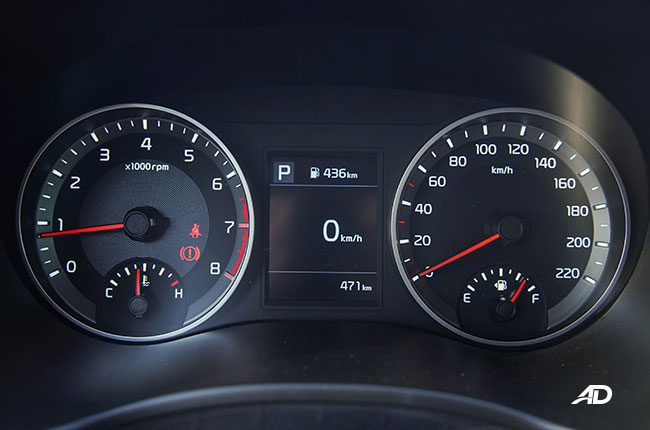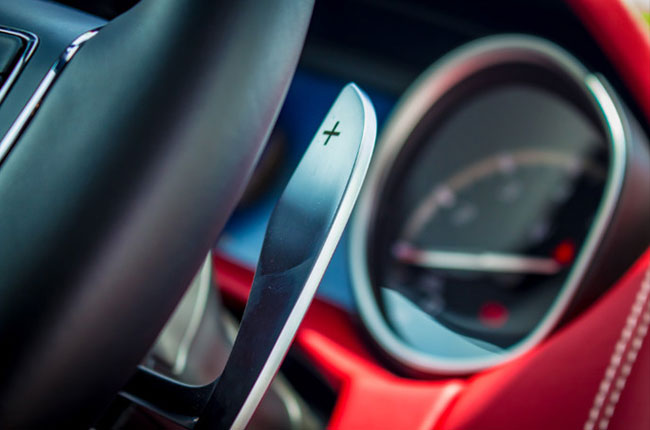
The manual gearbox has been a common transmission to have and to use for many years since the invention of the car. However, automatic, DCT, and CVT models have since become even more popular and even more technologically advanced making them easier to use and even closer in terms of performance to their manual counterparts. There are still people out there who want to shift their gears on their own and want to have full control of what their car does. With that in mind, we have created a quick guide to help you understand the basics of driving a manual car.
Before you start

Before you even get started driving a vehicle equipped with a manual gearbox you need to understand what each pedal does. In a manual transmission car it will have three pedals, arranged from right to left, first is the clutch, the second is the brake and the third is the accelerator.
The brake and the accelerator are pretty much straightforward in what they do. The accelerator is your “go fast pedal” which is in charge of getting the car moving and up to speed. The brakes, on the other hand, do the opposite and are in charge of stopping the vehicle.
The clutch pedal is a bit tricker and is one of the reasons why driving a manual transmission vehicle can be more difficult compared to an automatic one. Without getting too much into the technicalities, the clutch pedal is in charge of connecting the transmission to the engine. This means that if you press down on the clutch pedal you are essentially disconnecting the engine and from the transmission.
Getting started

With a bit of the basics out of the way now it's time to get started:
-
First, get into your car and put on your seatbelt
-
Make sure that the handbrake is still up and your car is stationary
-
Put the key in the ignition and turn it all the way onto the accessory mode
-
Make sure the transmission is in neutral
-
Start the car
Now that your engine is now running it’s time to get the car moving. To do this following the next few steps.
-
While your hand brake is still up push down on the clutch pedal
-
Move the gear shifter into first gear
-
Put your foot on the brake pedal to hold your car in place
-
Release the handbrake
-
Slowly begin lifting off the clutch and the brake pedal to find the biting point
-
The biting point of a clutch is when the engine begins to vibrate and you can feel the vehicle wanting to move forward.
-
Once you feel that the clutch has hit its “biting point” slowly begin to release the brake to allow the car to crawl forward.
-
As you gain speed, increase the revs slowly while raising your foot off the clutch until you are moving forward with only the use of the accelerator pedal.
-
Once you gain enough speed you can then shift into a higher gear. This normally happens once you hit 2,000 to 2,500 revs or every 20km/h on the speedometer.
It is important to note that you need to lift off your foot from the accelerator pedal in a smooth manner. If you release it too quickly or don’t give the engine enough revs, it could lead to a stall. In this case, you will need to restart your engine and repeat the process all over again.
Now if you want to stop your car without it stalling here is what you need to do.
-
Depress the clutch pedal all the way down so that the transmission is no longer linked up to the engine
-
Apply the brakes slowly and carefully
-
Shift into neutral if you are coming to a complete stop
-
If you think you will need to get moving immediately after you stop you can leave your car in gear for a while for a faster take-off.
-
It is important to note that you should not leave your clutch fully depressed for too long as it could cause damage to your vehicle. In cases like stop lights, it is best to shift into Neutral while waiting.
Switching gears

Now that you have gotten comfortable with starting and stopping your car, you can now practice entering higher gears. There are two ways of doing this, either you base it on your tachometer or your speedometer, whichever you prefer will generally work. For the tachometer, you should ideally shift into a higher gear at around the 2,000 to 2,500 RPM range where cars will typically encounter the start of their torque curve. For those who want to use the speedometer as their basis, you typically shift gears every 20km/h or so. However, if you are running on the highway the last and highest gear is the one you want to stick to especially if you are running above 80km/h. The last gear of your car’s transmission is enough to keep your revs low at higher speeds but is also capable enough of bringing it to higher speeds if needed.
How not to damage your clutch

One of the scariest things a newbie to driving a manual transmission vehicle can do is damage their clutch. However, there are ways that you can avoid it. One of which is not using the clutch to hold the vehicle on a hill as it can cause premature wear and tear on it. Another is to hold down the clutch while you are stopped for a long period of time. This can wear out your release bearing which can cause substantial damage to the clutch mechanism later on. While this will be hard to avoid for newer drivers try to avoid stalling your vehicle especially during hilly manoeuvers as this can cause unnecessary wear to your clutch plates.
Manual transmission or an automatic with manual mode?

Whether you prefer a manual or automatic gearbox that comes with a manual mode is ultimately down to your preferences. A manual transmission-equipped vehicle will generally be more affordable to buy compared to its automatic variants. Aside from this, a manual gearbox car will also be lighter, as automatic transmissions often weigh heavier than their counterparts. While a manual transmission will give you more control of your vehicle it will give you one more thing to juggle while driving because of the clutch pedal. Manual transmissions will also require you to know how to rev match in order to avoid breaking parts especially if you need to overtake another part.

That being said, there are automatic transmissions models available in the market today that offer you a good balance of control and convenience. These transmissions offer you the ease of use of an automatic gearbox but with the ability to select and shift gears on your own like a manual. This gives you a bit more control without having to juggle a clutch pedal while driving. That said if you want the best of both worlds getting an automatic vehicle with a manual mode is a good idea especially if you deal with traffic on a daily basis. However, you want more control of your vehicle and prefer to shift it yourself then you can’t go wrong with a good old manual gearbox. Whichever transmission option you choose for your vehicle is still up to you.
Latest Features
-
The 6 things every Ford Ranger must pass before it leaves the factory / Featured Article
Every Ford Ranger, from the base model to the Ranger Raptor, goes through a full inspection process before it leaves the factory. This includes six steps that make sure it’s ready to drive a...
-
Which GAC AION EV is best for your everyday lifestyle? / Featured Article
The GAC AION lineup has something for everyone, maybe you're after space, speed, or just a smooth city drive. Here's a quick breakdown of which model might work best for your day-to-day life...
-
The AutoDeal Awards 2024: Celebrating excellence in the auto Industry / Featured Article
The AutoDeal Awards 2024: Celebrating excellence in the auto Industry
Popular Articles
-
Cheapest cars under P700,000 in the Philippines
Jerome Tresvalles · Sep 02, 2024
-
First car or next car, the Ford EcoSport is a tough package to beat
Jun 18, 2021
-
Car Maintenance checklist and guide – here’s everything you need to know
Earl Lee · Jan 12, 2021
-
Most fuel efficient family cars in the Philippines
Bryan Aaron Rivera · Nov 27, 2020
-
2021 Geely Okavango — Everything you need to know
Joey Deriquito · Nov 19, 2020
-
Family cars in the Philippines with the biggest trunks
Sep 20, 2023
-
Head to head: Toyota Rush vs. Suzuki XL7
Joey Deriquito · Oct 28, 2020
-
Why oil changes are important for your car
Earl Lee · Nov 10, 2020
-
2021 Kia Stonic — What you need to know about it
Joey Deriquito · Oct 16, 2020
-
Top 7 tips for buying a used car in the Philippines
Joey Deriquito · Nov 26, 2020



